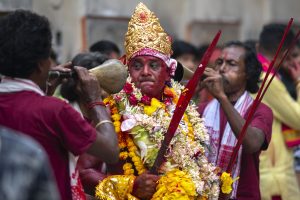Hindutva can easily be seen as an Indian version of a global movement of men, by men, for men. It reclaims their masculinity and combines religion with nationalism. It can be lumped together with the resurging Orthodox Christianity in post-communist Russia or the Evangelical Christianity sweeping neoliberal America. The enemy in all these cases is both external and internal – anyone who challenges an imagined glorious traditional history, where men played the dominant role, where women knew their place, and all things queer (now articulated as LGBTQ+) existed in shadows and footnotes.
But, with Hindutva, there is one additional challenge: an understanding of Hinduism itself. And the problem is structural.
Hinduism is structurally very different from the monotheistic religions that inform the global discourse. Judaism, Christianity, and Islam are based on ideas such as God, God’s Law, Judgement Day, and the Apocalypse. Hinduism is based on ideas such as infinity, timelessness, rebirth, and caste. As a result, the word “evil” cannot be translated into any Indian language. And the definitive article “the” does not exist in any Indian language either.
There arises a further complication given the fact that even the “modern” concept of the secular nation-state is structurally the same as monotheistic religions. An all-powerful state replaces an all-powerful God. The constitution replaces God’s Law. Traitors replace heretics. Nationalism is submission. Democracy is the ritual to choose the divine messenger who will enforce God’s Law.
Even science follows the structure of monotheistic religions. While it replaces faith with doubt and miracles with measurement, it insists on pursing and presenting “the” truth, like evangelists of yore. So, science and monotheistic religions remain at loggerheads. Only now scientists are being challenged by those who insist feelings are as important as facts. As a result, defining a woman has now become a national crisis in the United States as everyone scrambles for “the” truth. Ontology, not epistemology.
Indians, not just Hindus, have learnt over the centuries that the point of diversity is to work with diverse truths, which make sense to diverse communities. The opposite of equality is not inequality; it is diversity. The opposite of diversity is standardization. Standardization makes things efficient. Diversity, unfortunately, is inefficient.

































